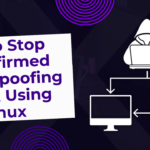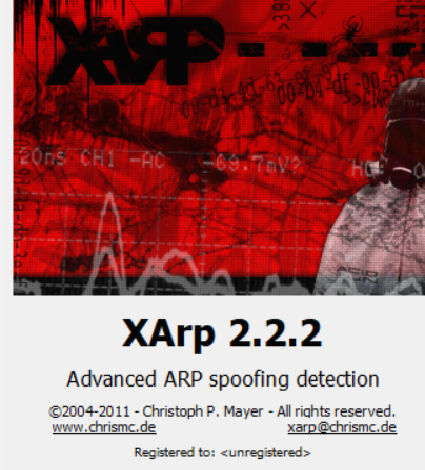
Secure WordPress Sites: Solid Security to Keep Vulnerabilities at Bay
In today’s dynamic digital landscape, maintaining the security of your WordPress website is paramount. Cybercriminals are constantly seeking vulnerabilities to exploit, putting your online presence, data, and reputation at risk. To keep your site safe and secure, it’s crucial to implement solid security measures that can effectively keep vulnerabilities at bay.
This comprehensive guide will delve into the common security threats facing WordPress websites, the devastating impact of security breaches, and the practical steps you can take to harden your site’s defenses. By following the strategies outlined in this article, you’ll be able to ensure your website security, cybersecurity, and malware protection are top-notch, safeguarding your online presence and safeguarding your valuable data encryption and user access control.
Get ready to explore the world of WordPress hardening and vulnerabilities patching, as we guide you through the essential steps to secure your WordPress site and keep it safe from potential threats. With the right security plugins and firewall configuration, your website will become a fortress, ensuring your online reputation remains impenetrable.
Understanding WordPress Security Threats
As the world’s most popular content management system, WordPress has become a prime target for cybercriminals seeking to exploit vulnerabilities in its core, plugins, and themes. Understanding the common vulnerabilities that WordPress sites face is crucial in developing a proactive approach to website security.
Common Vulnerabilities in WordPress Sites
Many WordPress sites fall victim to security breaches due to outdated software, weak password policies, and the installation of untrusted plugins or themes. Hackers and malicious actors can leverage these vulnerabilities to gain unauthorized access, leading to data breaches, malware infections, and even website defacement. Keeping a close track of security updates and maintaining a vigilant approach to WordPress hardening is essential to mitigate these cybersecurity risks.
Impact of Security Breaches on Websites
The consequences of a security breach can be devastating for WordPress site owners. A successful attack can result in a significant decline in website performance, negatively impacting search engine rankings and user trust. Additionally, vulnerabilities patching and malware protection can become time-consuming and costly, potentially disrupting business operations and undermining the overall reputation of the website.
Solid Security,securing your WordPress site,keep your site safe,vulnerabilities
Maintaining Solid Security for your WordPress site is crucial to safeguarding it from potential vulnerabilities. In this section, we’ll explore practical steps you can take to secure your WordPress site and keep your site safe from various security threats.
Implementing Strong Password Policies
One of the fundamental pillars of WordPress security is establishing robust password policies. Ensure that all user accounts, including administrative ones, have strong, unique passwords that are difficult to guess. Encourage your team to keep track of their login credentials and avoid using common or easily guessable passwords.
Keeping WordPress Core and Plugins Updated
Regular updates to your WordPress core, plugins, and themes are crucial in addressing known vulnerabilities and ensuring your site’s security. Stay vigilant and make it a habit to update your WordPress installation and all associated components as soon as updates become available. This proactive approach helps mitigate potential security risks and keeps your site protected.
Turn on Two-Factor Authentication
Adding an extra layer of protection to your WordPress site’s login process can be achieved through the use of two-factor authentication. This feature requires users to provide a secondary form of verification, such as a one-time code sent to their mobile device, in addition to their password. Enabling two-factor authentication significantly enhances the security of your WordPress site and helps prevent unauthorized access.
Hardening WordPress with Security Plugins
Ensuring the cybersecurity of your WordPress site is paramount in today’s digital landscape. One of the most effective ways to harden your WordPress website and patch vulnerabilities is by leveraging the power of security plugins. These specialized tools can provide a comprehensive malware protection and firewall configuration solution, fortifying your online presence against a wide range of threats.
Evaluating and Installing Trusted Security Plugins
When it comes to selecting the right security plugins for your WordPress site, it’s crucial to conduct thorough research and evaluate the options carefully. Look for plugins that have a proven track record of user access control and data encryption, ensuring the overall secure hosting of your website. Reputable plugins like Wordfence, Sucuri, and iThemes Security are excellent choices that can significantly enhance the wordpress hardening of your site.
Configuring Plugin Settings for Optimal Protection
Once you’ve selected and installed the appropriate security plugins, it’s crucial to configure their settings to ensure optimal protection for your WordPress site. This may involve adjusting firewall rules, enabling advanced malware protection features, and fine-tuning user access controls. By taking the time to customize the plugin settings, you can tailor the security measures to the unique needs and vulnerabilities of your website, creating a robust defense against potential cybersecurity threats.
Secure Hosting and Server Configuration
Maintaining the overall security of your WordPress site goes hand-in-hand with the reliability and security of your hosting environment. To ensure your website remains protected from potential threats, it’s crucial to choose a secure hosting provider and configure your server-level security settings effectively.
Choosing a Reliable and Secure WordPress Hosting Provider
When selecting a WordPress hosting provider, look for one that prioritizes secure hosting features. This includes advanced firewall configuration, robust data encryption protocols, and comprehensive user access control measures. By opting for a hosting service that takes security seriously, you can rest assured that your website and its sensitive data are safeguarded against unauthorized access and malicious attacks.
Configuring Firewalls and Server Security Settings
In addition to choosing a secure hosting provider, it’s essential to configure your server-level security settings to enhance the protection of your WordPress site. This includes setting up firewalls to monitor and filter incoming traffic, ensuring that only authorized users and legitimate requests can access your website. Furthermore, it’s crucial to keep your server software and security protocols up-to-date to address the latest vulnerabilities and maintain a robust cybersecurity posture.

Data Encryption and User Access Control
In the digital age, safeguarding sensitive information is of paramount importance. When it comes to securing your WordPress site, data encryption and user access control play a crucial role in protecting your website, your customers, and your business.
Implementing SSL/TLS Encryption for Data Protection
One of the most effective ways to ensure the confidentiality of your website’s data is by implementing SSL/TLS encryption. This technology creates a secure, encrypted connection between your user’s browser and your WordPress site, preventing unauthorized access and intercepting sensitive information, such as login credentials and customer details. By enabling SSL/TLS encryption, you can data encryption and elevate the overall security of your online presence.
Managing User Roles and Permissions
Alongside data encryption, user access control is essential for maintaining the integrity of your WordPress site. By carefully managing user roles and permissions, you can restrict access to specific areas of your website, ensuring that only authorized individuals can perform critical tasks or access sensitive information. This proactive approach helps mitigate the risk of unauthorized access, reducing the potential for security breaches and data leaks.
Conclusion
As we conclude this comprehensive guide on securing your WordPress site, it’s clear that implementing solid security measures is essential to safeguarding your online presence. By understanding the common vulnerabilities that WordPress sites face and the devastating impact of security breaches, you can take proactive steps to fortify your website’s defenses.
Throughout this article, we’ve explored various strategies for securing your WordPress site and keeping it safe from potential threats. From establishing strong password policies and enabling two-factor authentication to leveraging trusted security plugins and configuring secure hosting and server settings, you now have the tools and knowledge to transform your WordPress site into a resilient and impenetrable fortress.
Remember, website security is not a one-time task, but an ongoing process that requires vigilance and continuous improvement. By staying proactive in patching vulnerabilities, monitoring for malware, and maintaining tight user access control, you’ll be able to ensure your online presence remains a reliable and trusted resource for your audience, no matter what challenges may arise.














